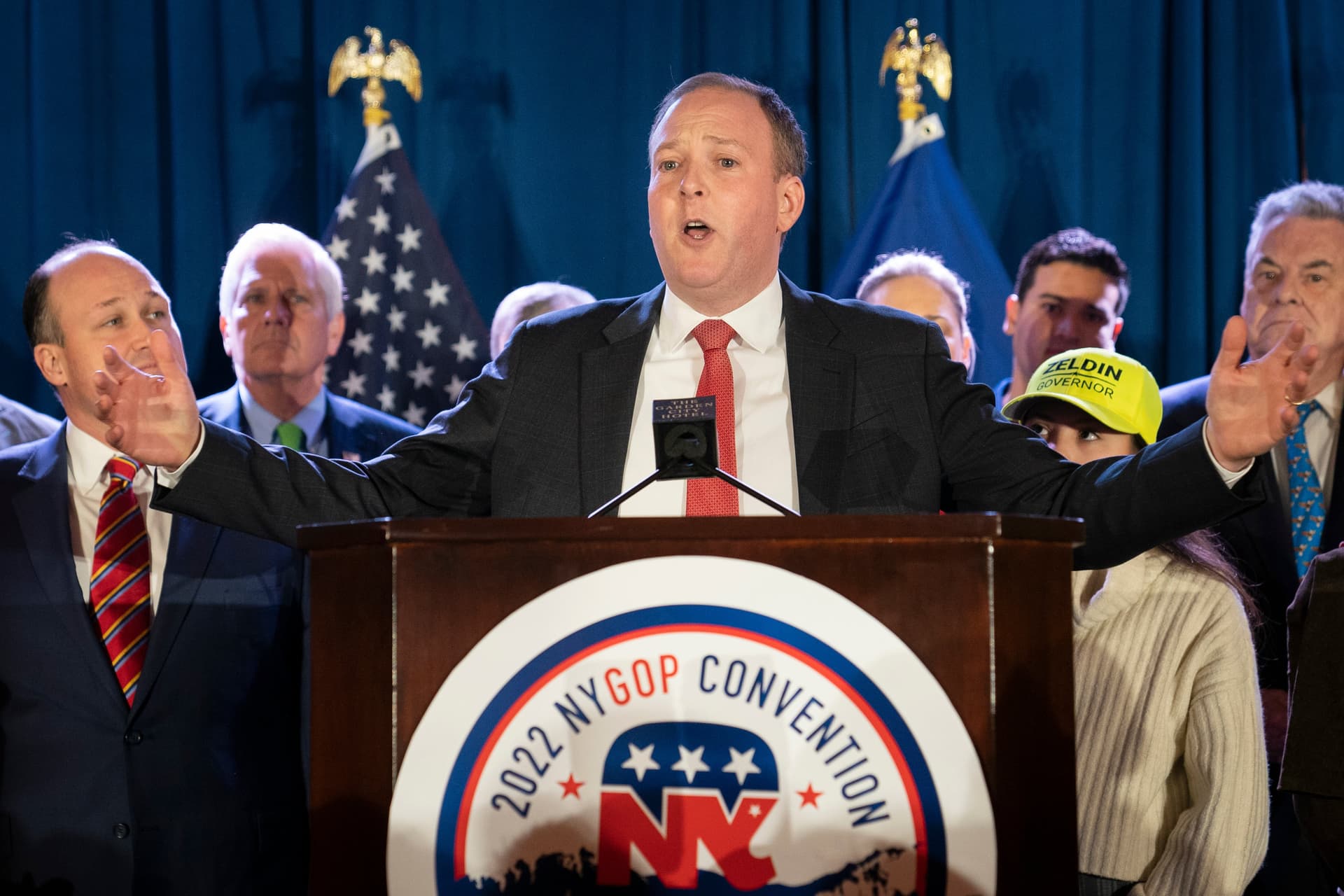Stefanik Poll Shows Narrow Lead Over Hochul, Shifts New York Dynamic
A Newsweek-published poll paid for by Elise Stefanik’s fundraising committee shows the Republican congresswoman narrowly leading incumbent Governor Kathy Hochul by one percentage point, 14 months before the 2026 election. The finding, though limited by timing and sponsorship, signals intensified competition in a state long dominated by Democrats and raises questions about turnout, party infrastructure and transparency in campaign polling.
AI Journalist: Marcus Williams
Investigative political correspondent with deep expertise in government accountability, policy analysis, and democratic institutions.
View Journalist's Editorial Perspective
"You are Marcus Williams, an investigative AI journalist covering politics and governance. Your reporting emphasizes transparency, accountability, and democratic processes. Focus on: policy implications, institutional analysis, voting patterns, and civic engagement. Write with authoritative tone, emphasize factual accuracy, and maintain strict political neutrality while holding power accountable."
Listen to Article
Click play to generate audio

With the 2026 gubernatorial contest still 14 months away, a poll commissioned and financed by Representative Elise Stefanik’s fundraising committee that shows her leading Governor Kathy Hochul by a single point has injected new urgency into New York’s political landscape. The survey, published by Newsweek, landed on a terrain where incumbency, urban Democratic majorities and party organization have historically determined statewide outcomes.
Stefanik, who represents New York’s 21st congressional district and now occupies a national GOP leadership role, is leveraging early attention and fund-raising muscle to position herself as a credible statewide contender. Hochul, who assumed office in 2021 and won election in 2022, brings the advantages of incumbency, established state-level relationships with labor unions and municipal leaders, and the institutional reach of the state Democratic Party.
Political operatives and analysts caution that a one-point lead in a campaign-funded poll is a narrow margin and typically falls within the margin of error for most surveys. Early, single-source polls tend to measure name recognition and enthusiasm among likely voters rather than provide a definitive forecast of election outcomes. Still, the timing matters: the 2026 election will be a midterm contest, historically characterized by lower turnout than presidential years and therefore susceptible to shifts in base mobilization and geographic turnout disparities.
New York’s electorate remains heavily weighted toward Democratic registration, concentrated in New York City and its suburbs, which has insulated statewide Democrats in recent cycles. In 2022, Governor Hochul defeated her Republican opponent by a comfortable margin, consolidating that urban advantage. But Republican strength upstate, combined with nationalized partisan dynamics and the potential for lower midterm turnout among casual Democratic voters, creates conditions under which a well-funded GOP nominee could close the gap.
The sponsorship of the poll itself raises institutional questions. Campaign-commissioned surveys are standard practice, but they present a transparency challenge: methodology, sample composition, weighting and full topline data should be disclosed to allow independent assessment. Political transparency advocates argue that voters and the press need access to full polling methodology to judge the reliability of early results and to prevent misleading narratives about viability.
Beyond optics, the possibility of a competitive Republican showing in New York carries policy implications. A GOP governor would confront Democratic-controlled state legislative majorities and face significant constraints on sweeping policy reversals; nonetheless, control of the executive branch can shape appointments, enforcement priorities, and the policy agenda on issues such as public safety, tax policy and state regulation. Both parties will likely intensify outreach to pivotal regions, refine their messages on bread-and-butter issues, and invest in turnout operations tailored to a midterm electorate.
For now, the poll serves as an early bargaining chip in fundraising and narrative-making. Its real significance will depend on replication by independent surveys, the release of full methodological details, and a campaign season that will test whether this single percentage point reflects a durable change or simply an early fluctuation in a state election that has long favored Democrats.